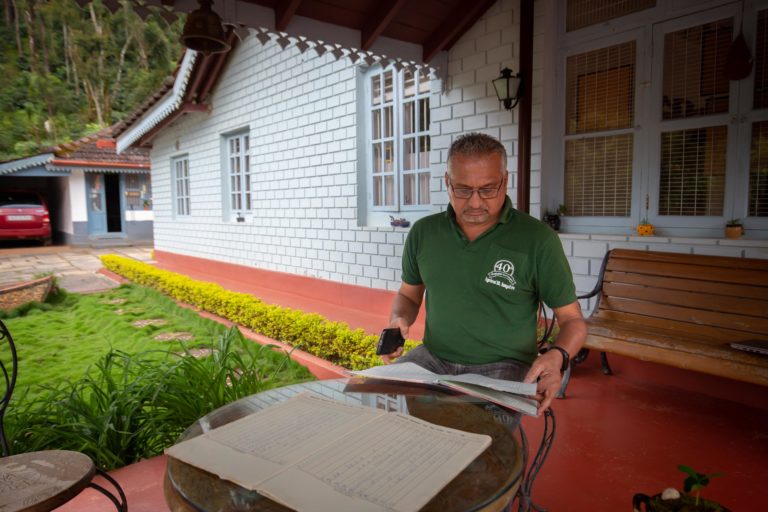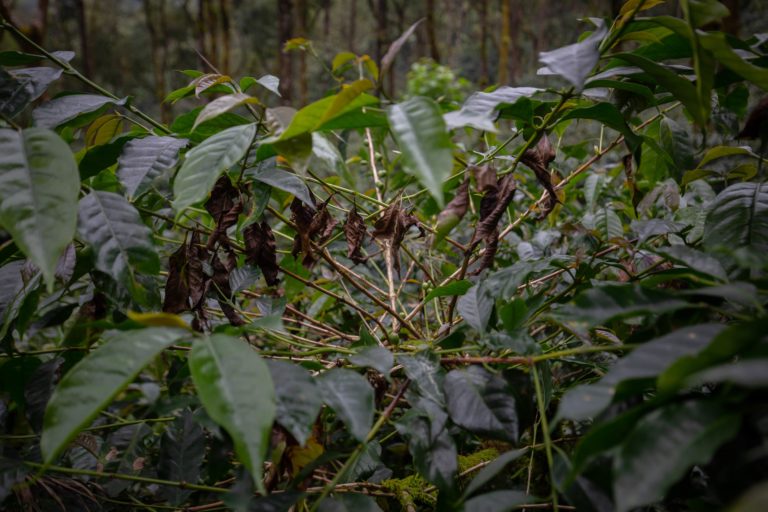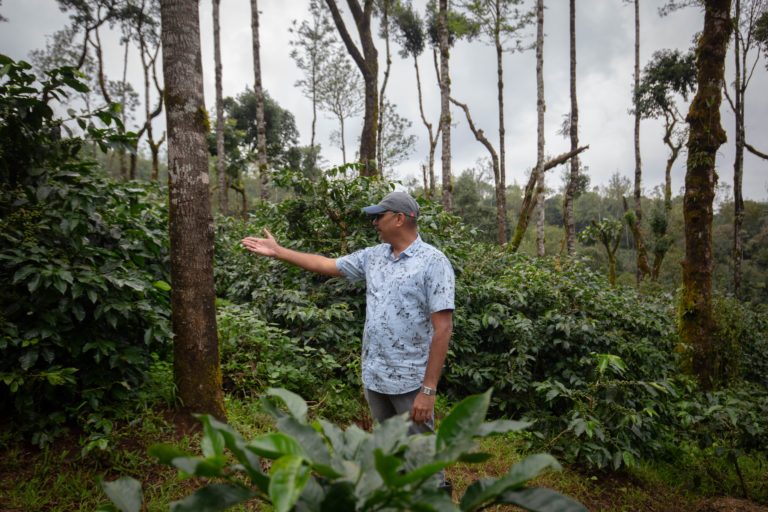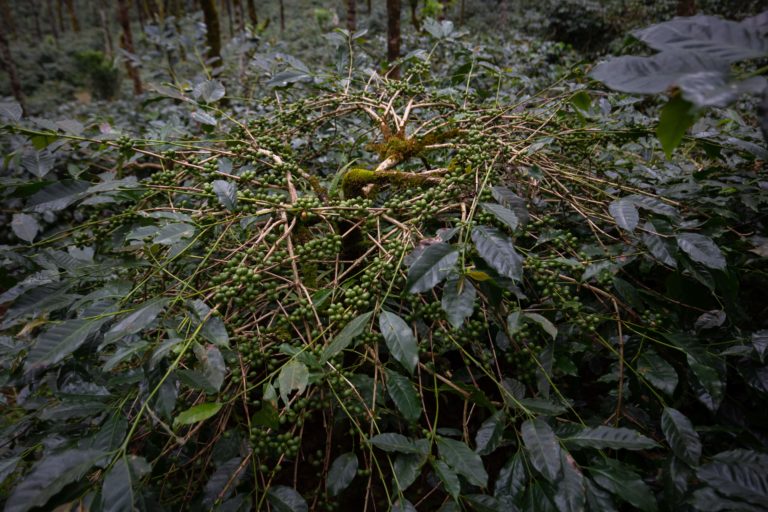Anitha Nanda, a coffee farmer from Coorg, blends 22 years of farming expertise with sustainable practices on her 150-acre estate. With strong community involvement, she has empowered around 400 women and helped preserve Coorg’s rich biodiversity.

Anitha Nanda Appanervanda is her coffee farm
Coffee farming is more than just growing beans—it’s the source of livelihood for around 2,50,000 coffee growers across India. As of 2024, India ranks sixth in the world for coffee production, with Karnataka being the top coffee-producing state. One of the most beautiful areas in Karnataka is Coorg (Kodagu), where Anitha Nanda Appanervanda lives, a woman who has turned her love for coffee into a lifelong journey. With a passion for farming and a dedication to sustainability, she has become a successful coffee farmer, making a big impact on her community.
A Childhood Love for Farming
Born and raised in Bangalore, Anitha’s interest in farming started during her childhood. She spent every vacation at her grandfather’s coffee estate in Coorg, where she fell in love with the land. “I knew from those early days that I wanted to return to the hills and be part of coffee farming,” she shares.
After marrying Nanda Belliappa, a coffee farmer from Coorg, her dream became a reality. Together, they managed Surya Kiran Estate, a family-owned coffee plantation.
Challenges and Success in Coffee Farming
Coffee farming presented significant challenges for Anitha and her husband in the beginning. Initially, they struggled to achieve a good harvest, but their dedication to sustainable practices led them to adopt intercropping techniques, blending coffee cultivation with black pepper to boost productivity. Anitha recalls, “It took almost 10 years before we saw good yields from our robusta coffee plants.” Their patience and hard work paid off, as they now cultivate 110 acres of robusta and 40 acres of arabica coffee.
For Anitha, farming is beyond merely producing coffee; it’s a commitment to protect the environment for future generations. Her farm is situated in Coorg, a region rich in biodiversity, where coffee is grown under the protective canopy of rainforest trees. “Our shade-grown coffee farms provide shelter for birds, insects, and wildlife, helping to maintain the natural balance of our ecosystem. We must protect this land from climate change and global warming,” she emphasizes. This dedication to sustainability has earned Anitha’s estate Rainforest Alliance Certification.

Anitha Nanda addressing audience about black pepper cultivation
Anitha encourages fellow farmers to embrace sustainable practices that safeguard the environment while also ensuring stable incomes. “We need to secure fair prices, but we should never harm the land that sustains us,” she asserts. Although her farming methods are primarily organic, she does use some fertilizers. “I avoid harmful chemicals and focus on natural methods. I maintain native trees and utilize weeding machines to enhance soil health and preserve the environment,” she explains.
Blending Tradition with Modern Technology
While they rely on traditional farming methods, Anitha and her husband have also introduced some modern techniques to make their work easier. “We use machines for irrigation and weeding where we can. But for the most part, we stick to the old ways that work well for us,” she explains.
In addition to coffee, they have also planted pepper and areca in some parts of their land, which helps them diversify and make the farm more sustainable.
Coffee Farming: A Source of Income and Community Support
The money they earn from coffee farming can vary depending on market prices, but Anitha says that robusta coffee has been very profitable in recent years. “Our costs are about Rs. 70,000 per acre for robusta and Rs. 1 lakh for arabica, but with high coffee prices, it’s worth it.” She produces 19-20 bags per acre of Robusta, with the current price for Robusta cherry being Rs.10,000 per bag, bringing in strong financial returns through her sustainable farming practices. Additionally, her Arabica parchment yields 6-7 bags per acre, fetching a price of Rs.16,000, further boosting her income.
Beyond farming, Anitha is an active member of Biota Coffee FPC, an Indian producer organization, and she serves as the secretary of the Codagu Women’s Coffee Awareness Body (CWCAB). This group, started in 2002, helps women coffee farmers promote eco-friendly farming practices and spread awareness about the benefits of drinking coffee. “We started this group when coffee prices were very low. Now we have 400 members who support each other and promote coffee.”

Anitha Nanda with her co-farmers in her coffee farm
Recognition for Sustainable Farming Practices
In 2020, Anitha was recognized for her efforts to promote sustainable farming. She received a Certificate of Appreciation from the Indian Institute of Spices Research (ICAR-IISR) for her work in intercropping black pepper with coffee. “It was a proud moment for me, showing that all our hard work towards sustainable farming was being appreciated,” she says.
Important Role of Women in Farming
Anitha believes that women bring a unique strength to farming. “Women are detail-oriented and care deeply for the land, plants, and the workers who help us. Our connection with the farm and the community makes a big difference,” she explains.
Since 2016, Anitha’s group, CWCAB, has celebrated International Coffee Day every year on October 1 by giving away free coffee to locals and tourists in Coorg. “It’s our way of sharing the love for coffee and celebrating the hard work that goes into every cup,” she says proudly.
Learning and Evolving: The Role of Beekeeping
Even after 22 years as a coffee farmer, Anitha continues to learn and innovate. Recently, she took up beekeeping, understanding its vital role in pollination and the overall health of her farm.
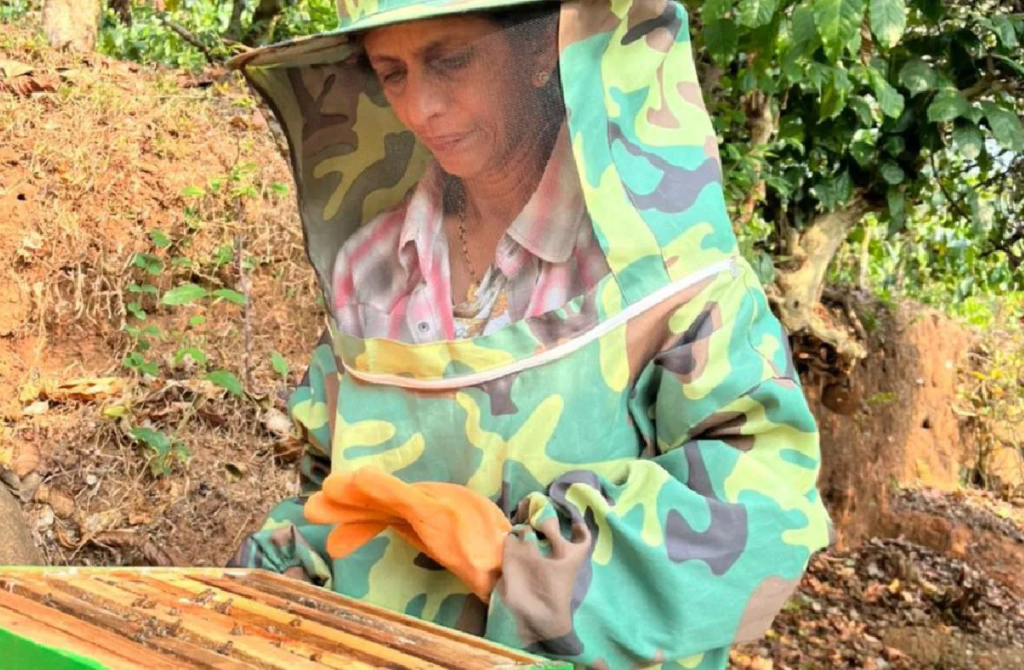
Anitha Nanda pursuing her bee keeping passion
Journey of Passion and Purpose
Anitha Nanda’s journey from city life to becoming a successful coffee farmer is a story of passion, hard work, and dedication. Her love for coffee farming, combined with her commitment to sustainable practices, has not only benefited her own farm but also her community.
For Anitha, coffee is more than just a crop—it’s a connection to her roots, and a legacy she hopes to pass on to future generations. Her story is a reminder that with determination, care for the land, and a strong community, anything is possible.
source: http://www.krishijagran.com / Krishi Jagran / Home> Success Story / by Shreetu Singh / October 01st, 2024
